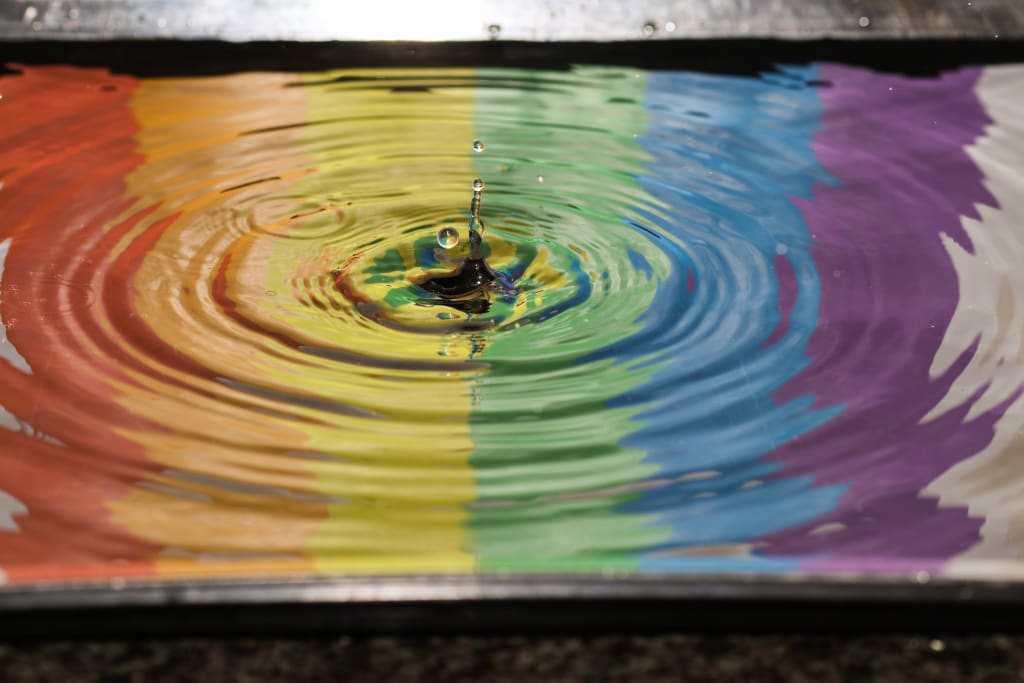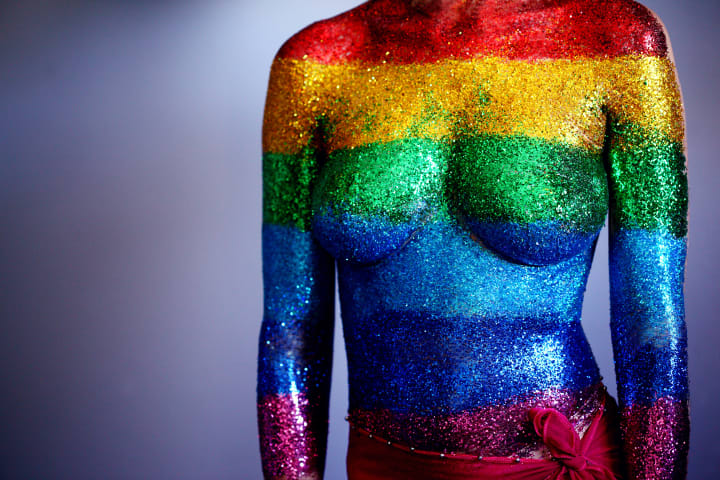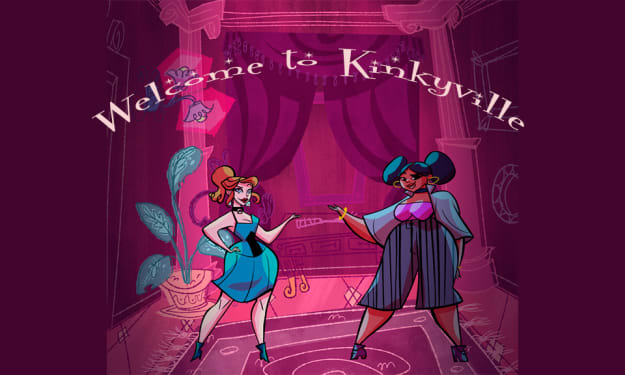
(Originally published on September 10, 2021)
[Disclaimer: If I cishet-guy this up, tell me, please. Edits are easy enough to do to correct things, and I’m willing to admit when I’m wrong.]
September 23rd is Bi Visibility Day, so it seemed appropriate to discuss why bisexual erasure is a problem. And while bisexuality and pansexuality are not the same, many of the ways they get denied are identical. (Pan Visibility Day is May 24th, by the way.) I want to state in no uncertain terms that bisexuality and pansexuality are real. (Saying it feels like saying the earth is round, but some still think that fact is up for debate, so here we are stating the truth like it’s a revelation.) Bisexuality and pansexuality aren’t just someone being confused, still figuring themselves out, or experimenting — not that there’s anything wrong with any of those. Sexuality is a personal thing, and the process of discovery is just as personal. But using those journeys to dismiss multisexuality is just bullshit.
Unfortunately, a lot of bi and pan people still experience erasure. Some have experienced a lot of pushback from within the LGBTQA+ community. Winter Lafae, a pansexual woman, found a disturbing pattern emerge the more she became part of the community. It wasn’t the heterosexual people in her life that questioned her, but “the very community that I assumed would be excited and supportive of me.” People dismissed it as confusion or acted like she needed to be saved and needed help finding out her “real” sexuality.
I’ve had people wave off my Pan label and say, “okay, so basically you’re bisexual” or “you mean you’re questioning” or another fun one, “you’re still in your discovery phase, no need to put some fake label on things right now.”
Most of the people in her immediate circle were supportive. Still, she had one gay friend tell her, “Basically, you’re probably a lesbian, but you got married and had kids, so I get why you’d be confused.” After repeated attempts to correct him, she eventually ended the friendship. Lucy, a bisexual woman, has grown tired of getting an almost stock response when she comes out as bi. “I get the usual, ‘Oh well, I can change that for you.’ And I think the dreadful part of that is I tend to hear it more from the women but rarely from the heterosexual men.”
There’s a lot of pressure on bi and pan people to choose one or the other: gay or straight. One of the more common manifestations of this is who people are in a relationship with. I’m married to a bi-woman. (I’ve got that bi-wife energy.) Violet realized she was bi close to the end of high school, and we started dating in college. We had a very queer friend group, so she felt fine coming out there. But things were a little different at home.
When I told my mom, she was incredibly invalidating. She asked if I was really bisexual if I had a serious boyfriend. That messed with my sense of self and my confidence, and I was really reticent to claim my sexuality for a long time after that. It literally sent me back into the closet for a decade. It made me feel like I didn’t *deserve* to use the label “bisexual” to describe myself. It even made me question if I was actually bi or if I was just trying to fit in with my queer friends.
Unfortunately, Violet’s experience is not uncommon. Long-term committed relationships like marriage are often considered choosing a side. (The idea is that if a bisexual man marries a man, he was always just gay, and if he marries a woman, he’s straight.) Chiloh, a somewhat gender-fluid, bisexual woman, is married to someone who just happens to be a man.
The LGBTQA+ community looks at me as a “passing” heterosexual — as if just because I married a man, I’m no longer valid or considered bisexual, as if putting a ring on my finger turns off the other parts of my sexuality.
This leads to a lot of static from the LGBTQA+ community, such as saying bisexual and pansexual people in relationships with someone of the “opposite” gender don’t belong at PRIDE events.
Chiloh also points out some of the other hostilities she feels from the queer community.
When I tried to talk to my lesbian gal pals about it, they’d usually say something like, “Well, you can’t have both. Lesbians don’t want anything to do with men, so if you bang a guy, you can’t bang us.” My gay guy friends were just neutral, honestly. They’d shrug it off and say things like, “Just don’t be saying you’re bi for attention.”

And while some think that bisexual and pansexual people achieve their “final form” after getting into a relationship, there’s also an opposite and equally erroneous assumption. People believe bisexual and pansexual people are incapable of long-term committed relationships.
James, a bisexual man, lacked examples and the language to describe his feelings, so he didn’t end up coming out until his 30s. When he did, the first person he told was his partner.
She’s a sincere ally, but she was initially put off. She worried it would end our relationship, that I would want to see other people, and so on. It didn’t occur to her right away that I was still the same person, that nothing had changed between us.
While there are certainly some bi and pan people that are unfaithful or promiscuous, that’s true for pretty much every sexual orientation. Some straight people will try to fuck everything that moves. Some lesbians are stepping out on their marriage. Just because bi and pan people are attracted to more than one gender doesn’t mean they will cheat on their partners. Winter says, “I wish more people understood it’s okay to say that I think someone is beautiful and sexy, but it doesn’t mean I want to sleep with them.”
Just because a bi woman is into men and women doesn’t mean she’s going to be down for your threesome. (Some may, but not all. Sorry unicorn hunters.) And no two individuals experience multisexuality the same way. “Every bisexual is different. Some have preferences,” says Tyler, a bisexual man. “I wish people wouldn’t generalize. Just because they know that one bisexual is one way doesn’t mean everyone is like that.”
The Kinsey Scale is deeply flawed, especially because it ignores anything outside a strict gender binary. As imperfect as it is, it still illustrates how different people attracted to more than one gender may be drawn toward one gender more than the other. Chiloh identifies as “aggressively bisexual” and describes herself as having a 50/50 split on finding both men and women sexually attractive. For Violet, it’s 65/35, leaning men/mascs. “Though, I’m demi-sexual, so that might mask part of it.”
What’s in a Name?
While there are people who disagree on the exact definitions, in the broadest sense, bisexuality is an attraction to two or more genders, and pansexuality is the attraction to people of any gender or regardless of gender. The choice of which label fits best is up to the individual.
Another aspect of bi and pan erasure is how they’re used to erase one another. Even while looking for sources to site for this article, typing in “pansexual erasure” tended to pull up results that centered bisexuality and treated pansexuality as an afterthought, if they mentioned it at all. (Stock images were also a challenge.)
One of the weirder examples of this was a publication by The Trevor Project. In September of 2020, they released a guide entitled How to Support Bisexual Youth: Ways to Care for Young People Who Are Attracted to More Than One Gender. On the inside cover, the title was expanded to Ways to Care for Bisexual, Pansexual, Fluid, and Queer Youth Who are Attracted to More than One Gender, which muddies what the report was supposed to be titled. But if you were someone looking to support pansexual youth, the title on the cover might not have looked like the right fit. I don’t know the inner workings of the organization, but there may have been some discussion or evolution on this because, in April of 2020, they released a report entitled, Multisexual Youth Mental Health: Risk and Protective Factors for Bisexual, Pansexual, and Queer Youth Who are Attracted to More than One Gender.
More Myths To Bust
Other pervasive myths about bisexuality and pansexuality need to be jettisoned from the cultural consciousness. As with many identities outside cisheteronormativity, there is this idea of bisexuality and pansexuality as being “trendy.” According to a Gallop poll published in February of 2021, there has been an increase in people self-identifying LGBTQA+, with those identifying as bisexual making up the majority. (I’m sorry pansexual folks. This was another instance where your sexuality was conflated with bisexuality in the survey or the publication of the data.)
Someone might look at this and think people are just signing up because it’s “fun,” or as Chiloh mentioned above, for attention. But even the publication of the Gallup poll said that it’s possible the increased statics had more to do with increased understanding of sexuality and more acceptance of LGBTQA+ identities. (I’m sure that’s the cause, but they’re attempting to operate within the data that they have.)
We have almost ubiquitous internet and social media access. People see themselves represented and hear their thoughts and feelings described by someone else. Then they realize they share similarities. The internet hasn’t spread bisexuality and pansexuality. It’s given bisexual and pansexual people the language to describe themselves. Attempts to dismiss this as just the popular thing to do are ignorant at best.
Countess, a bisexual woman, points out another myth. “There are people who tell me I’m transphobic for being bi instead of pan. Bisexuality includes trans people.” Bisexuality isn’t transphobic. The claim stems from transphobia. Believing it requires you to think that a trans woman isn’t a woman and a trans man isn’t a man, as well as thinking a person who identifies as bi has never been attracted to a nonbinary or genderfluid person, and therefore they’d fall outside the spectrum of people attractive to bisexual people.
As with the sexually permissive and unfaithful myths, there are undoubtedly individual bisexuals who are transphobic. But they’re not transphobic because they’re bi. They’re transphobic because they’re assholes.
And in some circles, women’s bisexuality is accepted, but the idea persists that bisexuality doesn’t exist in men. There have been several methods used to measure this, and the conclusions keep coming back positive.

Trying To Make Some Sense of It All
It feels a bit silly writing some of this down because it seems so obvious, yet these attitudes persist. They’re actively harmful to bisexual and pansexual people. Tori, a bisexual nonbinary femme, recounts her experience with bi-erasure:
I lost sleep over it, cried, and had anxiety attacks, and sometimes thought it might just have been better if I could just force myself to be either straight or gay.
Tori isn’t alone in this. Vanessa, A bisexual woman, says, “The attempts at bi/pan-erasure make me angry. And it’s still a huge anxiety trigger for me.”
Bi and pan erasure cause negative physical and mental health effects. And for what? What does it accomplish? As Esther, a bisexual woman, explains, “Having your sexuality questioned by someone else doesn’t make your sexuality go away. It just makes you feel ashamed for it, and no one should ever feel ashamed for just existing.”
Yes, there are people in denial and people whose understanding of their sexuality is evolving. But that doesn’t erase multisexuality. Everyone’s sexuality is up for them to determine. Just because a pan or bi woman is in a relationship with a man doesn’t mean she’s suddenly straight. It comes down to the individual. Any attempt to erase parts of someone’s identity makes you an asshole. And to those who have felt the pressure to change or to choose, Lucy says:
Love who you love, lust who you lust, and want who you want. We don’t have to choose because not all the choices in life are black and white. There are sometimes greys, and maybe greys are what we want.
About the Creator
Guy White
I write about sweet-hearted guys in sexy situations. Respectfully naughty. Sometimes funny & always dyslexic and ADHD. 37 he/him 💍






Comments
There are no comments for this story
Be the first to respond and start the conversation.